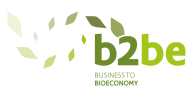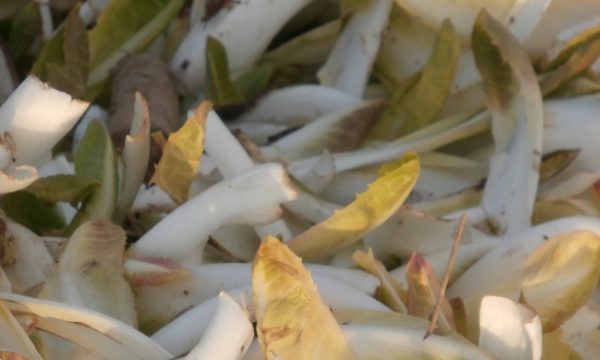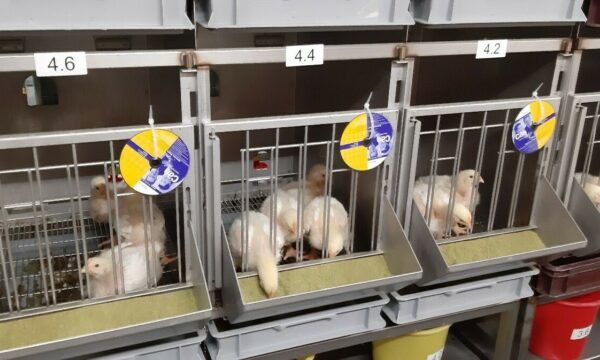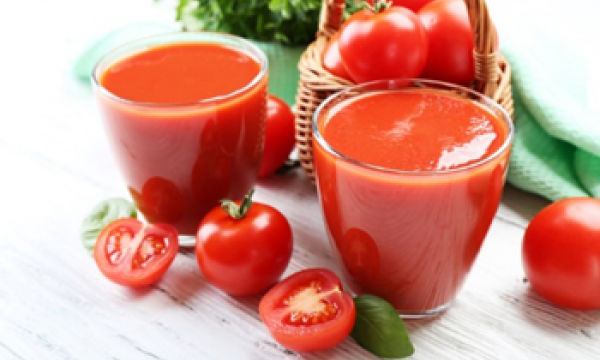Press release First structural overview shows performance of Flemish bioeconomy

For the first time, the numerous flows of renewable raw materials and processing in the Flemish economy have been mapped and their economic value for Flanders has been estimated. The study was conducted by ILVO and VITO at the request of Flemish Minister Jo Brouns and his predecessor, both responsible for Work, Economy, Innovation & Agriculture. The annual repetition of this study makes it possible to implement a targeted, stimulating policy and to evaluate its impact. The B2BE Facilitator, the platform set up a year ago to link suppliers of raw materials to potential processors, can also use the data from the extensive study to optimize its operation.
Flemish Minister of Work, Economy, Innovation & Agriculture Jo Brouns: "The transition to a sustainable and bio-based economy is essential. This way we avoid waste and fossil raw materials while converting the valuable components from organic material into materials, food, medicines, etc."
The ILVO and VITO study shows a great deal of interest to make that switch in the Flemish economy. The bio-based economy grew twice as much as the overall Flemish economy between 2014 and 2018. Moreover, the chemical sector, which traditionally relies heavily on fossil raw materials, appears to be the second largest consumer of biomass after the food industry. Jo Brouns: "With the Flemish bio-economy policy plan, we are further building bridges between these sectors and strengthening our technical know-how. A real win-win situation for Flanders, for the sectors and for society."
Renewable raw materials?
Renewable raw materials or biomass come mainly from agriculture but also from forestry, landscape management, fisheries, aquaculture and the waste and residual flows from processing. In the bio-based economy, often called bioeconomy for short, that organic material is converted into a variety of products such as food and materials as well as intermediate products such as isolated molecules and renewable raw materials.
Agriculture is by far the biggest producer of biomass
It is striking that the forestry, fisheries and waste treatment sectors produce only 2% of the biomass in Flanders. Their share is negligible compared to the biomass production by Flemish agriculture and horticulture (98%). That sector produces on 46% of our land area 21 Mton biomass main streams of which the majority is vegetable (70%) and another 21 Mton so-called biomass co- streams, largely in the form of animal manure (82%).
The (Dutch-language) report shows a detailed overview per producing sector of these main products and secondary flows.
Chemical industry is the largest non-food processor
The processing sectors and their biomass and product flows are more difficult to map and will be explored further in subsequent editions of the monitoring program. Broadly speaking, the sectors are food (incl. beverages, feeds, oil and fats); textiles, paper, wood, chemicals, pharmaceuticals, plastics, bioenergy and waste processing.
The food industry remains the main consumer of agricultural and horticultural biomass. A nuance here is that certain sectors that fall under food industry do not always produce (only) food. An example is the oil industry, which produces oil for both food and technical applications.
After the food industry, the chemical sector emerges prominently as a customer. It uses biomass to produce large volumes of mono-fatty acids, fertilizers, bioethanol and biodiesel. However, the chemical sector is still largely dependent on fossil raw materials and is therefore a "hybrid" bioeconomy sector.
Economically, the sector shows high performance and strong growth
Economically, the Flemish bioeconomy did well in 2018. The food sector creates the highest added value, turnover and employment. In turn, the bio-based pharmaceutical sector has the highest labor productivity (€450k/employee). In relative terms, the Flemish bioeconomic sectors are all doing significantly better than the European average and often better than our neighboring countries. In terms of agriculture, Flanders is second only to the Netherlands.
In the period 2014-2018, the added value of these sectors also increased significantly, with the beverage sector (70%) as the main outlier. The food, wood and bio-based pharmaceutical sectors also experienced strong growth. The overall Flemish economy did well during that period, but the Flemish bioeconomy did more than double.
The figures from 2020 onwards will make it possible to evaluate the effects of the covid crisis and the war in Ukraine. International trade is also very important for the Flemish bioeconomy.
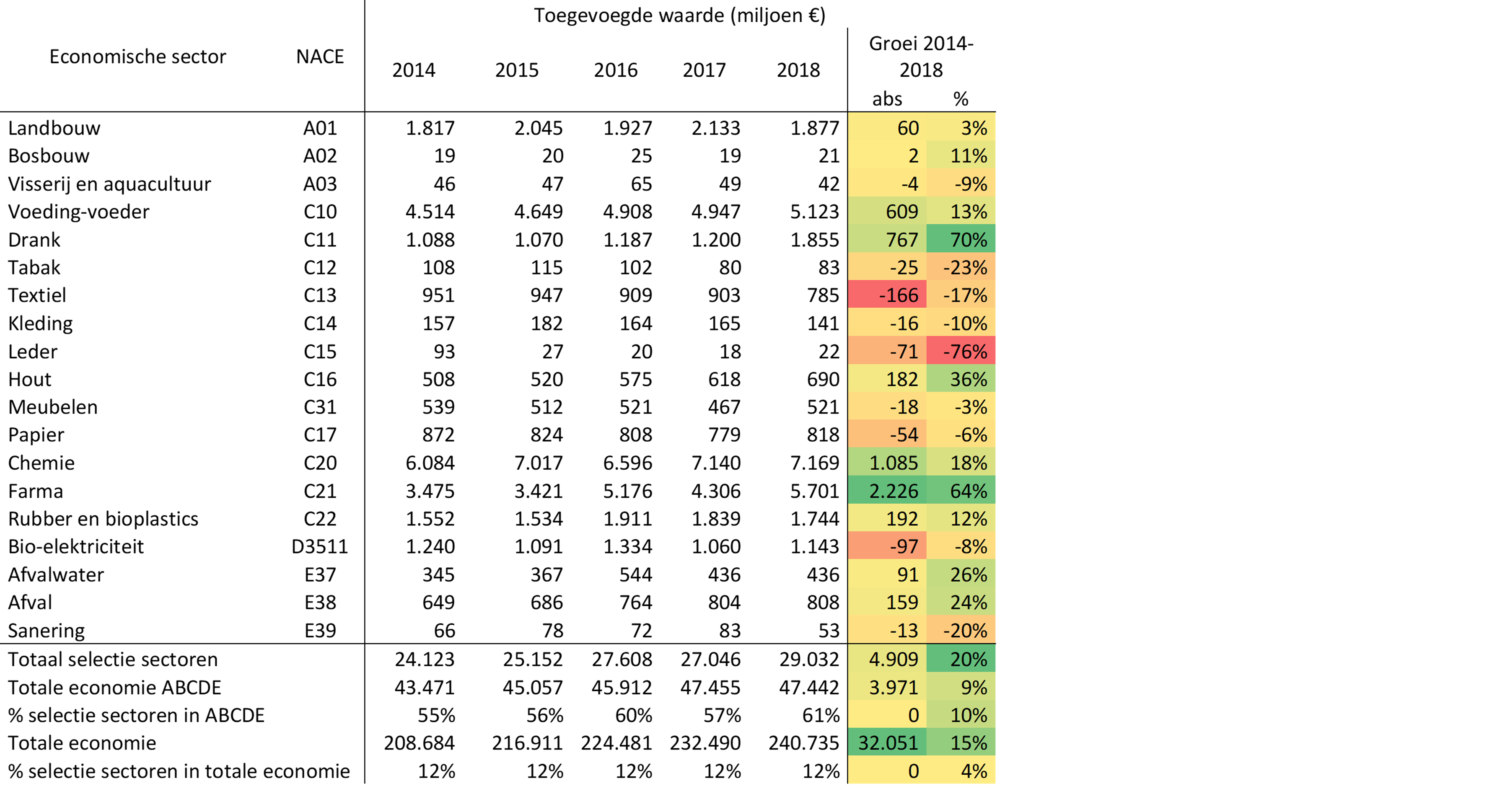
Demand exceeds supply: biomass to the highest bidder?
This study clearly shows that the demand for biomass in Flanders far exceeds the supply. It is therefore important to consciously choose the applications for which this valuable biomass will be used. One useful framework for this is the principle of closed material loops. The goal is to use as little "new" primary biomass as possible by making products last as long as possible through reuse and recycling. A second framework is the cascade principle, in which first human food, then feed and only in last place energy production stand as a meaningful application for biomass.
VITO researcher Dieter Cuypers: "In reality, however, in the free market you see the economic logic at play: the highest bidder wins and that is not necessarily the most sustainable one. Each project should be evaluated critically through a systemic lens so that investments in the bioeconomy effectively contribute to a more sustainable world."
In this regard, it is important not to focus unilaterally on climate and on replacing fossil resources with just any biomass, but to look at all the valuable components that the various biomass flows contain and choose the most meaningful valorization path for them. Dieter Cuypers (VITO): "Today in the market there is a lot of enthusiasm for biofuel and bioplastics, but from the point of view of biomass these are not the most interesting applications. Biomass is a broad concept and chemically contains a wealth of interesting atoms: carbon as well as protein, phosphorus, nitrogen, etc. It's truly wasteful to reduce that wealth of possibilities to carbon atoms for biofuel and plastics."
Monitoring 2018 and 2019
In 2020, the Flemish Government launched the Flemish policy plan on bioeconomy that aims to accelerate the development of this young sector in Flanders. To implement a stimulating policy based on figures, the competent department of Economy, Science and Innovation (EWI) commissioned VITO and ILVO to monitor developments in the bioeconomy. The recent report is a baseline measurement based on figures from the year 2018. It uses official sources and statistics, supplemented by sector-specific info when this was available and released for publication.
The overview is not exhaustive; some processes or flows need further exploration. This will be done in the annual updates implemented by ILVO with the B2BE Facilitator as client. The 2019 monitoring is in the works, with a focus on unraveling the flows going in and out of chemistry, plastics and bio-based pharmaceuticals.
Hernieuwbare grondstoffen?
Hernieuwbare grondstoffen of biomassa komen hoofdzakelijk uit de landbouw maar ook uit de bosbouw, landschapsbeheer, visserij, aquacultuur en de afval- en reststromen van verwerkingsprocessen. In de biogebaseerde economie, kortweg vaak bio-economie genoemd, wordt dat organisch materiaal omgezet in allerlei producten zoals voeding en materialen maar ook halffabricaten zoals geïsoleerde moleculen en hernieuwbare grondstoffen.
Landbouw met voorsprong grootste biomassaproducent
Opvallend is dat de sectoren bosbouw, visserij en afvalverwerking slechts 2% van de biomassa in Vlaanderen produceren. Hun aandeel is verwaarloosbaar in vergelijking met de biomassaproductie door de Vlaamse land- en tuinbouw (98%). Die sector produceert op 46% van onze landoppervlakte 21 Mton biomassahoofdstromen waarvan de meerderheid plantaardig is (70%) en nog eens 21 Mton zogenaamde biomassanevenstromen, grotendeels onder de vorm van dierlijke mest (82%).
In het rapport wordt per producerende sector een detailoverzicht gemaakt van deze hoofd- en nevenstromen.
Chemie grootste non-food verwerker
De verwerkende sectoren en hun biomassa- en productstromen zijn moeilijker in kaart te brengen en zullen in de volgende edities van de monitoring verder uitgediept worden. Het gaat grofweg om de sectoren voeding incl. dranken, voeders, olie en vetten; textiel, papier, hout, chemie, farmacie, kunststof, bio-energie en afvalverwerking.
De voedingsindustrie blijft de belangrijkste afnemer van biomassa uit de land- en tuinbouw. Een nuance daarbij is dat bepaalde sectoren die onder voedingsindustrie vallen niet altijd (alleen) voeding produceren. Een voorbeeld is de olie-industrie die olie produceert voor voedings- én technische toepassingen.
Na de voedingsindustrie komt de chemische sector als afnemer prominent naar voren. Die gebruikt biomassa om grote volumes eenwaardige vetzuren, meststoffen, bio-ethanol en biodiesel te produceren. De chemische sector is evenwel nog grotendeels afhankelijk van fossiele grondstoffen en is daarom een ‘hybride’ bio-economische sector.
Economisch performante en sterk groeiende sector
Economische gezien deed de Vlaamse bio-economie het goed in 2018. De voedingssector creëert de grootste toegevoegde waarde, omzet en tewerkstelling. De biogebaseerde farmaceutische sector kent dan weer de hoogste arbeidsproductiviteit (€ 450k/ werknemer). In relatieve zin doen de Vlaamse bio-economische sectoren het allemaal significant beter dan het Europese gemiddelde en vaak ook beter dan onze buurlanden. Op vlak van landbouw moet Vlaanderen enkel Nederland laten voorgaan.
In de periode 2014-2018 steeg de toevoegde waarde van deze sectoren ook sterk, met als voornaamste uitschieter de drankensector (70%). Ook de voedings-, hout- en biogebaseerde farmaceutische sector kenden een sterke groei. De totale Vlaamse economie deed het goed in die periode, maar de Vlaamse bio-economie deed het meer dan dubbel zo goed.
Het is uitkijken naar de cijfers vanaf 2020 om de effecten van de coronacrisis en de oorlog in Oekraïne te kunnen evalueren. Internationale handel is ook voor de Vlaamse bio-economie van groot belang.

Vraag overstijgt aanbod: de hoogste bieder wint?
Deze studie maakt duidelijk dat de vraag naar biomassa in Vlaanderen het aanbod ruim overstijgt. Het is daarom belangrijk om bewust te kiezen voor welke toepassingen de waardevolle biomassa wordt ingezet. Eén nuttig kader daarvoor is het principe van gesloten materialenkringlopen. Doel is zo weinig mogelijk ‘nieuwe’ primaire biomassa gebruiken door producten via hergebruik en recyclage zo lang mogelijk te laten meegaan. Een tweede kader is het cascadeprincipe waarbij eerst humane voeding, dan voeder en op de laatste plaats pas energieproductie als zinvolle toepassing voor biomassa staat.
VITO-onderzoeker Dieter Cuypers: “In realiteit zie je op de vrije markt echter de economische logica spelen: de hoogste bieder wint en dat is niet noodzakelijk de duurzaamste. Elk project moet kritisch en met systemische bril geëvalueerd worden, zodat investeringen in de bio-economie effectief bijdragen tot een duurzamere wereld.”
Het is daarbij belangrijk om niet eenzijdig te focussen op klimaat en op het vervangen van fossiele grondstoffen door eender welke biomassa, maar om te kijken naar alle waardevolle componenten die de verschillende biomassastromen bevatten en daarvoor het zinvolste valorisatiepad te kiezen. Dieter Cuypers (VITO): “Vandaag is er op de markt veel animo voor biobrandstof en bioplastics, maar vanuit het oogpunt van de biomassa zijn dat niet de interessantste toepassingen. Biomassa is een ruim begrip en bevat chemisch bekeken een rijkdom aan interessante atomen. Je hebt koolstof maar ook eiwit, fosfor, stikstof, enz. Het is zonde om die rijkdom te reduceren tot koolstofatomen voor biobrandstof en -plastics.”
Monitoring 2018 en 2019
In 2020 lanceerde de Vlaamse Regering het Vlaams beleidsplan bio-economie dat de ontwikkeling van die jonge sector in Vlaanderen moet versnellen. Om een stimulerend beleid te kunnen voeren op basis van cijfers gaf het bevoegde departement Economie, Wetenschap en Innovatie (EWI) opdracht aan VITO en ILVO om ontwikkelingen in de bio-economie te monitoren. Het rapport dat nu voorligt is een nulmeting op basis van cijfers uit het jaar 2018. Het maakt gebruik van officiële bronnen en statistieken, aangevuld met sectorspecifieke info in het geval die beschikbaar en vrijgegeven werd.
Het overzicht is niet volledig en sommige processen of stromen moeten verder worden uitgediept. Dat zal gebeuren in de jaarlijkse updates waarvoor ILVO als uitvoerder en de B2BE Facilitator als opdrachtgever zullen instaan. Aan de monitoring van 2019 wordt nu gewerkt en daarin zal de focus liggen op het nauwgezetter ontrafelen van de stromen die in en uit de chemie, kunststoffensector en biogebaseerde farmacie gaan.
